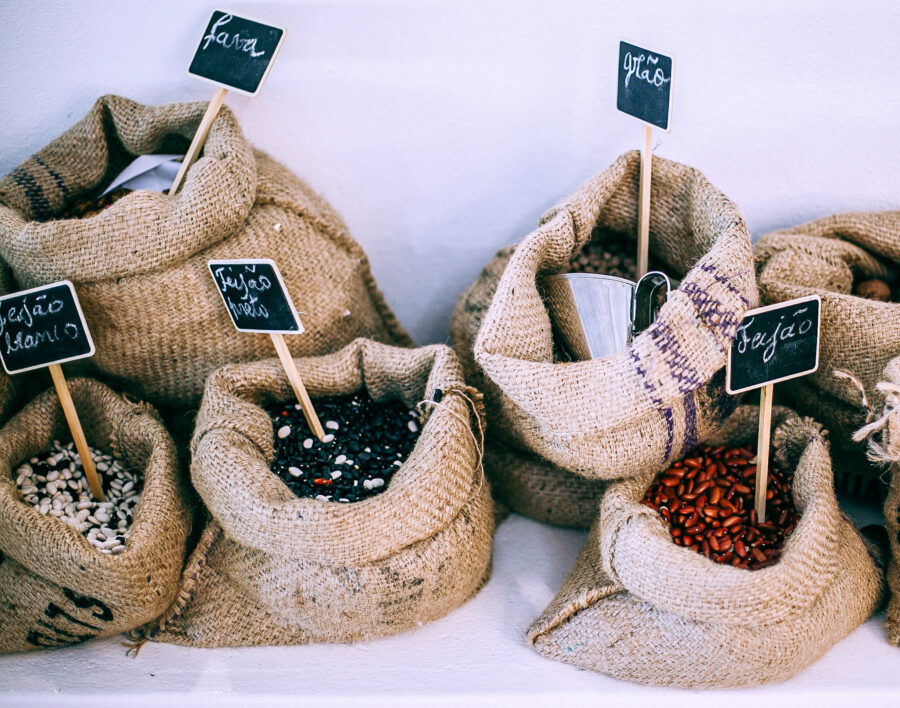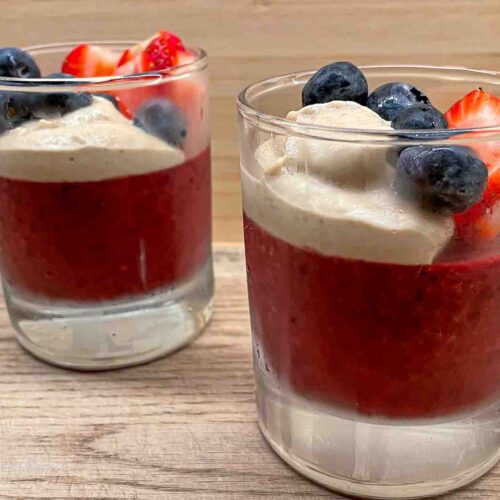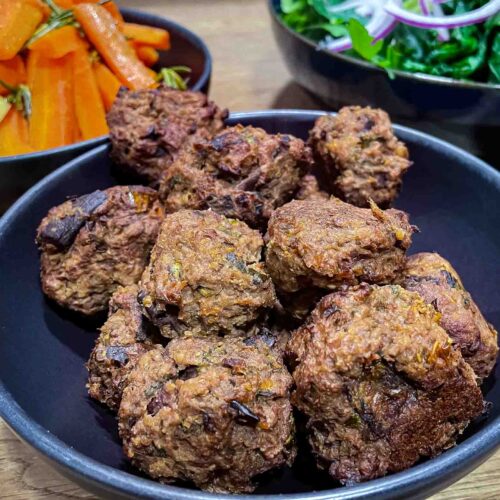Beans and other legumes, such as peas and lentils, have an impressive track record when it comes to promoting good health. They can help combat heart disease, prevent and manage type-2 diabetes, and be a powerful ally when it comes to weight management, to name a few significant benefits.
This article is not about all those health benefits. This article is about how to cook them.
However, for those of you who’d like to dig into the science I have added a few enlightening links at the end of this article.
And now onto why you are here:
How To Cook Dried Beans
Cooking beans from scratch is not rocket science but it does take a little time and planning, which begs the question: Why cook your own beans when you can just use canned?
For me this is an easy one. Home cooked beans are cheaper, contain less sodium, and are less of a burden on the environment (even if you recycle the can/glass/carton). Another concern with relying on canned goods is the potential exposure to, and build-up of, BPA (bisphenol-A), which is a chemical often used in the canned food industry. Studies have shown that BPA can migrate from the lining of the can into the food it contains. Although the evidence is mixed, some studies have linked BPA exposure to increases of various health problems, including heart disease and type-2 diabetes. (Association of urinary bisphenol A concentration with medical disorders and laboratory abnormalities in adults). I do use prepackaged beans from time to time but always try to find the ones packaged in glass or food cartons, like Tetra-paks, for that reason.
Soaking beans:
Dried beans need to soak in plenty of water for at least 8 hours before cooking. Soaking helps with two things: first of all it shortens the overall cooking time. Secondly, pre-soaking may help to remove some of the compounds which may cause an upset stomach in some people. This potential stomach discomfort is due to compounds called lectins. These compounds are present in many different foods and are thought to be highly beneficial for overall health. Some foods, like beans and whole grains, have very high concentrations of lectins, so these foods can irritate the lining of the stomach, causing bloating and excess gas, if not properly prepared. Pre-soaking beans may help with this gassy problem. But rest assured, boiling the beans resolves all of those issues. I have added a few lectin-specific links at the bottom of this page which explain the pros and cons of lectins.
I normally just leave my beans soaking overnight and cook them at some point during the following day.
You can’t really “over soak” them so don’t worry about leaving them too long – but don’t go overboard either or you might find yourself a with bowl of beansprouts. The beans do not need to be refrigerated while soaking. Just leave them on the countertop, covered with a dish towel. I wouldn’t leave them out and about in room temperature for more than 20 hours, though, so if you find yourself in a situation where you’ll need to leave them longer just drain them and put them in the fridge until you have time to cook them – or in the freezer if your plans have changed completely.
Quick soaking method:
If you are in a hurry or completely forgot to soak the beans beforehand there is a quick-soaking method you can use in a pinch. It goes like this:
Put rinsed and sorted beans in a pot and cover with cold water by at least 8 cm / 3 inches. Cover the pot and bring to a boil. Leave it boiling for a couple of minutes and then remove the pot from the heat. Leave the beans in the hot liquid, covered, for 1 hour. The beans are now ready to be cooked, either using the recipe below or according to your chosen recipe.
I personally prefer the texture of beans that have been slow-soaked, but from a nutrition perspective both methods are perfectly good. So use whichever method will make you eat more beans.
Adding flavors or not:
The recipe listed below is a very basic one, with the bare minimum of flavors added. It will make beans ready to use in a recipe calling for already cooked beans, like for example a dip or mixed into veggie burgers, or this lovely pasta dish. Some recipes, like this one, will infuse the beans with more or different flavors from the start of the cooking process. Whether to do this or not depends on the desired end result. Your chosen recipe will tell you whether the beans should be already cooked or not before you start out.
You can also go really basic and simply cook the beans in water with no flavors added. This is perfectly fine but will obviously result in beans with less flavor from the get-go. The important part, though, is to cook them in plenty of water and to not add any acidic foods, like lemon juice or tomatoes, until towards the end of the cooking process. This is because acidic foods will toughen the skin of the beans, preventing them from going nice and soft. So if you’d like to add tomatoes to your beans wait until your they are about 3/4 done.
The same is the case with salt. Adding salt from the beginning will also harden the skin of the beans, so hold the salt until you get towards the end of the cooking process.
What types of beans is this recipe good for?
This recipe can be used with any type of dried bean, from black to white and all the other lovely colors in between. It also works perfectly for cooking chickpeas, also know as garbanzo beans.
Cooking time:
Cooking time varies depending on the type of bean. Black-eyed peas may take as little as 30 minutes while chickpeas may take as long as two hours to cook. Age is another factor which may impact cooking time. The older the beans the longer they may take to cook, so be sure to check the expiry date before buying.
Here is a rough guide listing the cooking times of the most common beans. I have ordered them according to texture, flavor and common usage:
Delicate flavor:
Great Northern beans take on the flavor of whatever food they are cooked with. This means they do well in dishes such as pasta with beans and greens (like this one) or various stews and casseroles.
- Great Northern beans: 45 and 60 minutes.
Soft texture:
Black beans are very common in Tex-Mex and Mexican dishes, but also work great in soups and stews. Kidney beans work well in chilis but also in salads. Both black and kidney beans pair very well with rice.
- Black beans: 60 to 90 minutes
- Kidney beans: 90 – 120 minutes
Powdery/floury texture:
Navy beans are the beans of choice for baked beans but are equally great for soups and stews. Because of their floury texture they also work great when pureed into dips. Pink beans are often used in chilis, and pinto beans are often used in re-fried beans, as well as Tex-Mex and Mexican dishes in general.
- Navy beans: 90 – 120 minutes
- Pink beans: 60 minutes
- Pinto beans: 90 – 120 minutes
Buttery flavor:
The large lima beans, also know as butter beans, work really well in a salad with chunky vegetables, fresh herbs and a simple vinaigrette. They are also excellent in soups, stews and casseroles. Chickpeas, or garbanzo beans, are popular in Middle Eastern dishes such as hummus and falafel, and also in Indian curries. Black-eyed peas and cranberry beans (also known as Borlotti beans) are both great additions to a bean salad. Fava beans (also known as broad beans) are somewhat different from the others beans in this group in that they have a thick outer layer which needs to be removed before boiling. This is easily done after they have soaked. Simply peel off the skin by pinching each bean between your thumb and forefinger. Fava beans are a good substitute for chickpeas in falafel.
- Lima beans (butter beans): 60 – 90 minutes
- Chickpeas: 90 – 120 minutes.
- Black-eyed peas: 30 – 60 minutes
- Cranberry beans (Borlotti beans): 45 – 60 minutes
- Fava beans (broad beans): about 45 minutes.
Creamy and with nutty undertones:
The creamiest of beans I find to be the baby lima bean. They work well in soups, stews and casseroles but are equally great all by themselves flavored with fresh herbs, extra virgin olive oil and fresh lemon juice. Flageolet beans (pronounced fla-zho-LAY) originated in France where they are traditionally paired with lamb stew. But Flageolets are also great in vegetarian stews, as well as salads and pasta dishes. The same is true for cannellini beans.
- Baby lima beans: 60 minutes.
- Flageolet beans: 60 – 90 minutes
- Cannellini beans (sometimes referred to as white kidney beans due to their shape): 45 – 60 minutes
Whatever beans you have your heart set on for tomorrow’s dinner (or tonight’s if using the quick-soak method) they are sure to please. Beans, whatever their shape, size or color have so much to give in terms of flavor, texture, good health and value for money. So grab a bowl and a cup of beans and get those beans soaked and ready to go.

How To Cook Dried Beans
Ingredients
- 1 cup (250 ml) dry beans, pre-soaked. See text above or note below.
- 6 cups water
- 1 yellow onion. Peeled but left whole
- 10 whole cloves
- 2 bay leaves
- 1 teaspoon sea salt, optional
Instructions
- Drain the pre-soaked beans and cover them with cold water by at least 3 inches / 8 cm.
- Stick the whole cloves into the peeled onion and add that to the pot together with the bay leaves. Do not add the salt yet as this will toughen the skin of the beans and also risk making them too salty. They soak up a lot of water as they cook.
- Cover and bring to a boil. Simmer, partially covered, until the beans are tender, 30 minutes to 2 hours depending on the type and the age of the beans. Skim off any foam that rises to the top during the cooking process. This foaming only happens in the beginning of the process and not necessarily with all types of beans. Chickpeas seem to be the most foaming ones.* If during the cooking process the water level gets so low that the beans are no longer covered by water, simply add more boiling water. Adding cold water will prolong the cooking process. *
- If adding salt, add it about 45 minutes to an hour into the cooking process (unless you are making the quick-cooking black-eyed peas, in which case you can add salt sooner). See text above for approximate cooking times of various types of beans.
- When the beans are done, drain them and remove the onion and bay leaves. Your beans are now ready to add to a recipe calling for already cooked beans.
Notes
A little motivational science…
2 – Legume Consumption and Risk of Coronary Heart Disease in US Men and Women.
4 – What is the problem with lectins?
5 – Blocking the Cancer Metastasis Enzyme MMP-9 with Beans and Chickpeas. (video)
6 – Is Fiber an Effective Anti-Inflammatory? (video)
7 – Are Lectins in Food Good or Bad? (video)





